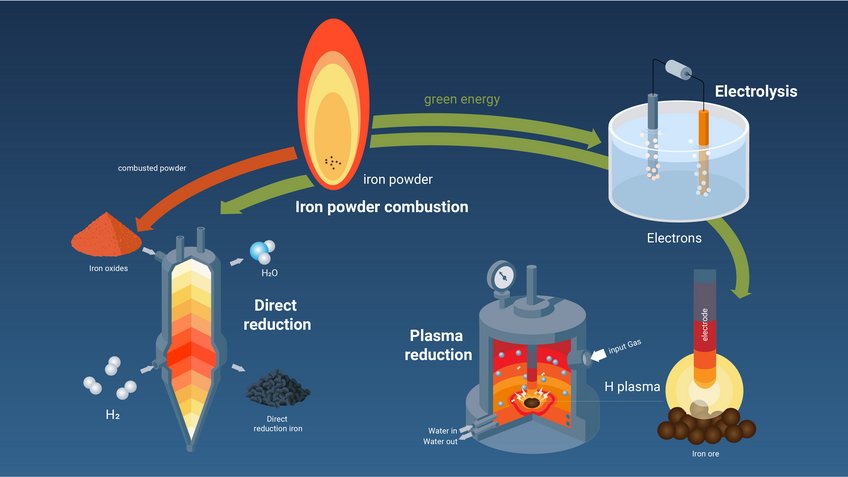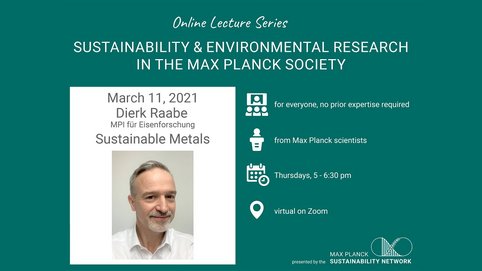
Sustainable Synthesis of Materials
Our group aims to develop sustainable metal extraction routes from both primary ores and secondary wastes. We are working to replace current carbon-based extraction methods with hydrogen-based, fully electrified pathways.
This undertaking is motivated by the fact that the metal-extraction industry is among the largest industrial emitters of CO₂ globally. For example, the global metals industry accounts for roughly 40 % of all industrial greenhouse-gas emissions and about 10 % of global energy consumption. Iron and steel alone contribute around 8 % of total CO₂ emissions (≈ 3.7 Gt CO2 yr⁻¹). Aluminium production adds another ~1 Gt CO2 yr⁻¹, with an intensity of about 14.4 t CO₂ per tonne of Al. Nickel and cobalt extraction can exceed 20 t CO2 per t metal, driven by fossil-fuel reductants and energy-intensive refining. In each case, the bulk of emissions arises from the use of carbon-based reductants and fossil-derived energy sources.
To achieve sustainable metal production, we investigate the substitution of carbon-based extraction processes by hydrogen-based routes, i.e. solid-state direct reduction (DR) and liquid-state hydrogen-plasma based reduction (HPSR).
Hy-DR (hydrogen based direct reduction)
This technology builds on the existing Midrex process-type route. In it, we study the reduction of iron oxides into a porous solid product known as direct-reduced iron (DRI) using hydrogen as the reductant. Our investigations span from the pellet scale down to the nanoscale: we explore the reduction mechanisms, kinetics, phase transformations, and microstructural evolution that influence the reduction behaviour. In particular, we couple experimental studies with theory (phase-field modelling) to advance the scientific understanding of sustainable iron production via direct reduction.
HPSR (hydrogen plasma smelting reduction)
In this approach we investigate metal-oxide reduction directly from ores, secondary wastes or scrap, using a lab-scale electric-arc furnace. The feedstock is exposed to a high-temperature arc plasma containing a mixture of hydrogen and argon. This allows simultaneous melting, reduction and refining of the material in one single-step operation. Our furnace is equipped with in-situ monitoring of the plasma arc (via optical emission spectroscopy) and gas analysis (via mass spectroscopy). We combine these probing techniques with thermodynamic modelling, elemental partitioning studies and microstructural evolution analysis to understand the underlying mechanisms of this sustainable metal-production route.


